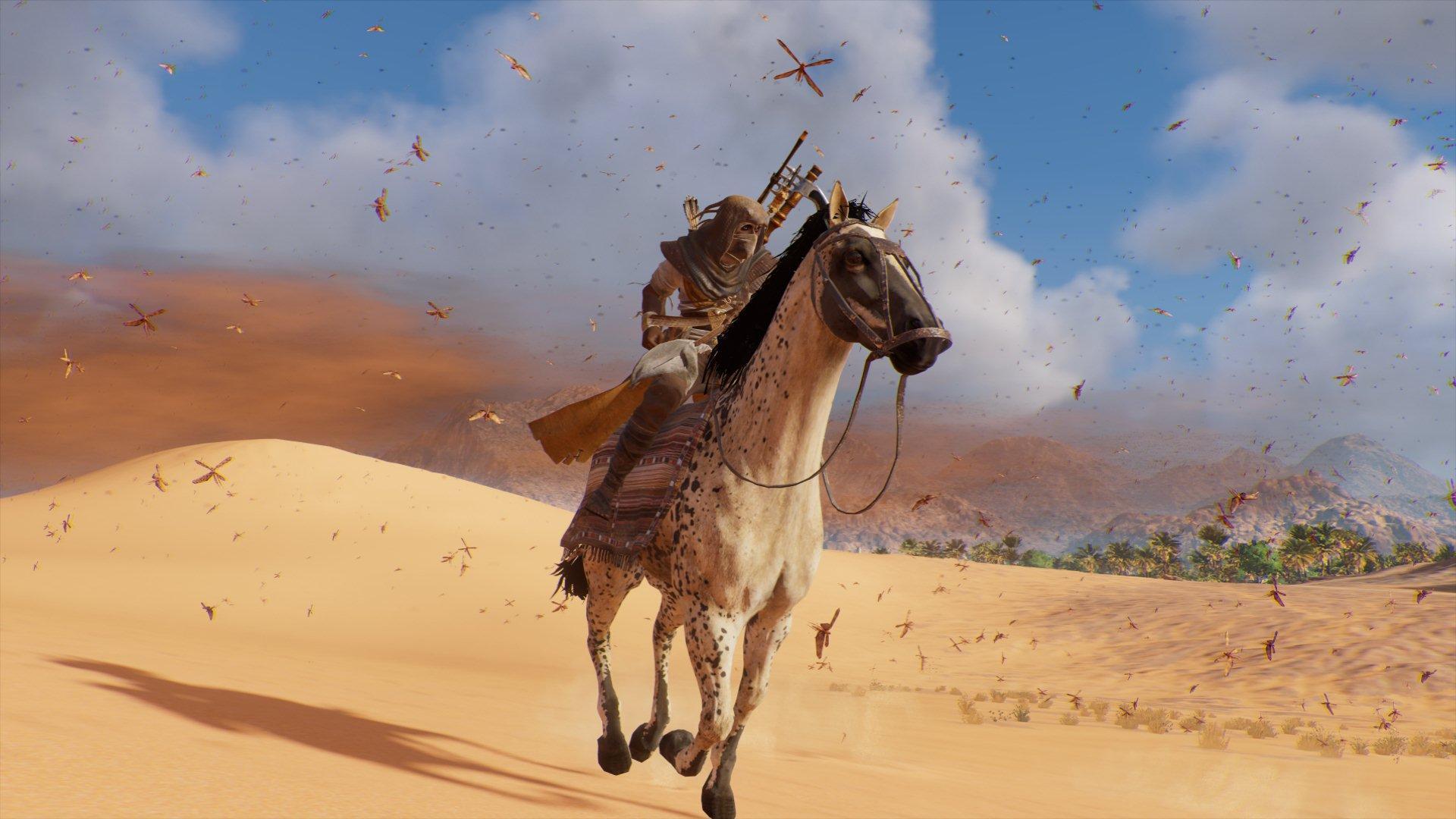Putting Transition Areas In To Categories
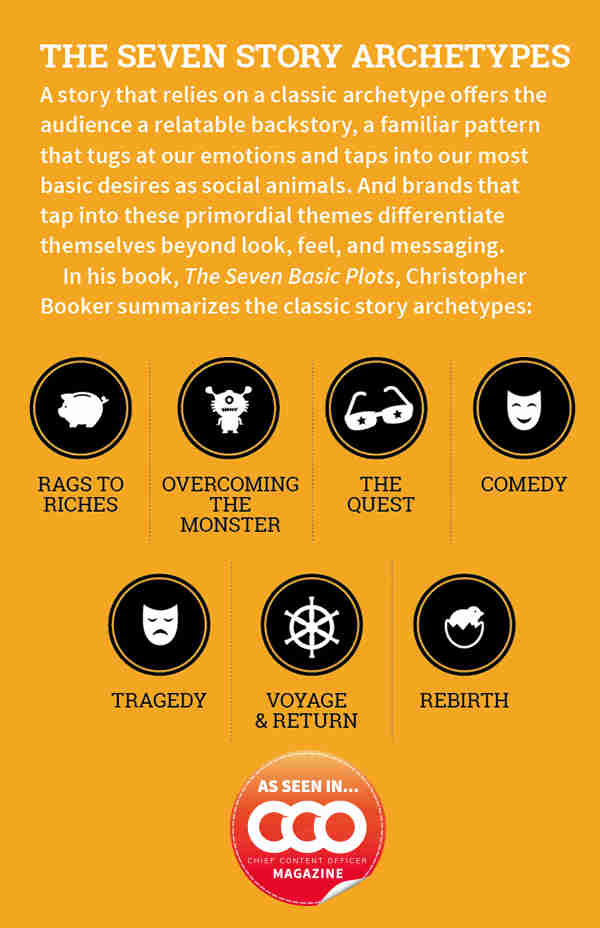
Image from Christopher Bookers book 'The Seven Basic Plots' from Content Marketing Institute
To help identify the techniques already used in transition areas, I'm going to look and see if these areas possibly fall into different categories. Similar to 'The 7 Story Archetypes', a list that categorizes types of story's and is theorized that all/most story's will fit into them. I'm hoping that this helps me to see if there are any similarity's and differences in the techniques used in transitions.
The Chase

Image of 'Crash Bandicoot 1 remastered' from 336GameReviews
These kinds of transitions involve a push. Something such as a timer, object or creature that pushes the player character through the transition within a certain time. I find these interesting as how little of the environment you visually take in, so many details will go missed due to the time frame. However These sort of of techniques help the player interact and learn more about the environment, as the route often involves jumps and doges as part of the game play, the player has to learn these patterns and interact with the surrounds. The cool-down for this transition is also very minimal, making me think of how I can play with limits to the players cool-down period in my own environments.
The Aesthetic
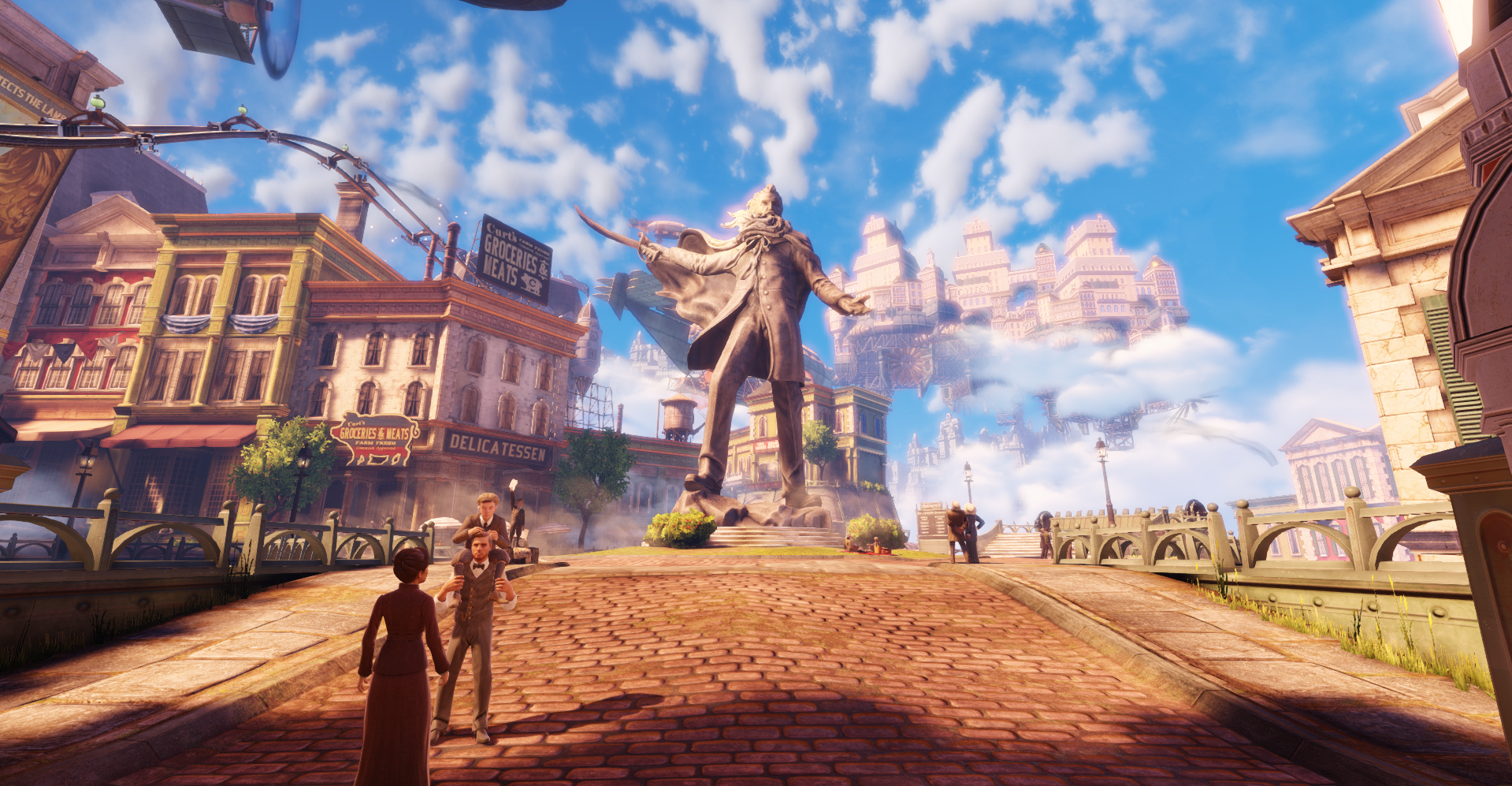
Image from 'Bioshock Infinite' from Secondary Fire
The aesthetic are the transitions that I have found that cool-down periods are the most prominent. Full of wonder, and plenty of visuals to take in at your own pace for the majority. A transition area that speaks for its self, a primary focus on the aesthetic feel of the world. These tend to have little in terms of active game play if any at all.
The Maze
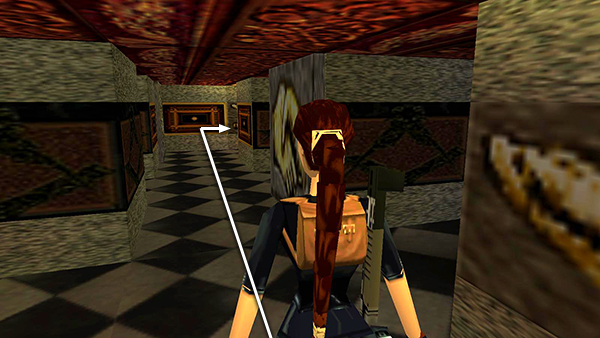
Image from 'Tomb Raider 3' from Stellalune
The maze is a transition that is built to be repetitive, trapping the player there so they have to find a way out. Strong visuals are a kind of hindrance, as repetition works best in these areas as the environment is used deceive the player. Giving an effective feeling of lost and confused.
Story Revealing
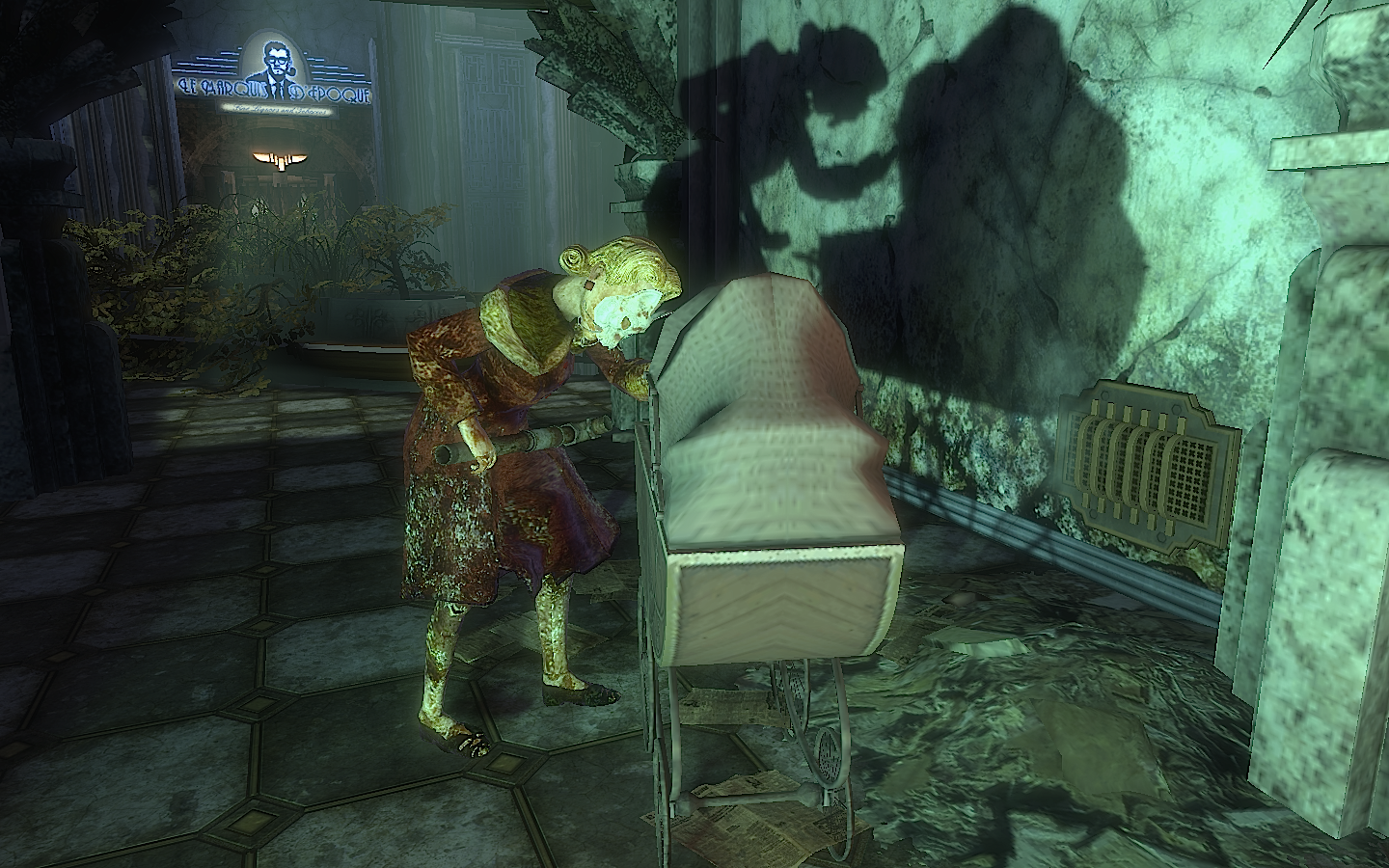
Image from 'Bioshock' from Fandom
Focused heavily on ways that implement story into the environment. Whether that be through subtle visuals or the more prominent this category, scripted events. Using this transition as a way of revealing more story to the character. Giving the player the cool-down while also giving the player more to experience within the game via story. Due to this fact these areas tend to be found in more story driven games.
Fun Travel

Image from 'God Of War 2' from Youtube AKeon
Travelling through the environment is a large part of transitioning from one area or another. Some games use different transport methods as a way of enhancing the experience through the environment. Such as Flying, driving or ridding a creature. This brings a different way of experiencing the environment and gives the player a new way of moving. Enhancing the travel for the player compared to main game areas.
The Battle Path
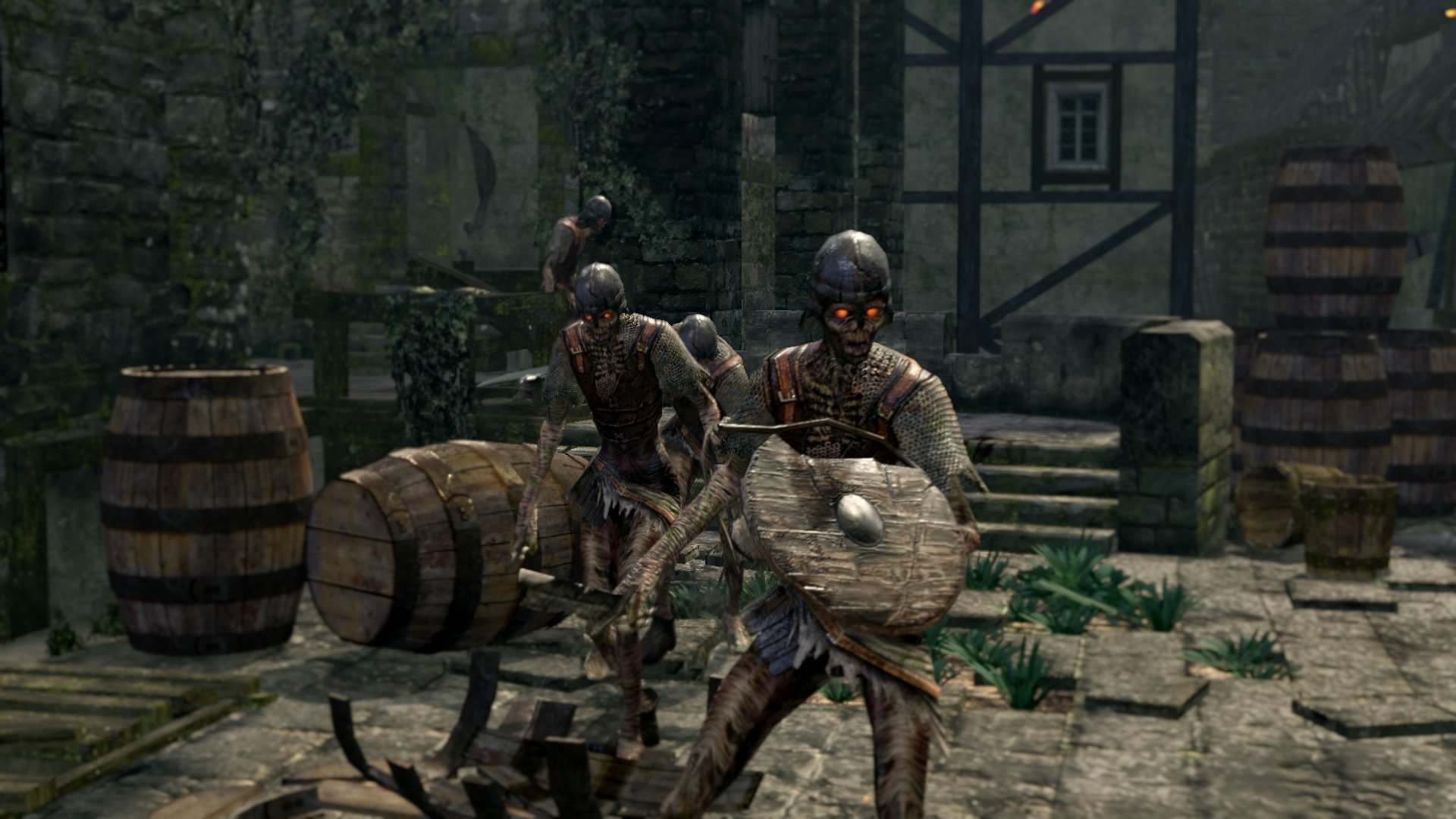
Image from 'Dark Souls' from Dark Souls Remastered Wiki
Usually these areas are filled with loads of small enemies. These transitions focus on player experience of the game-play. The environment wont be particular observed in most cases due to the pacing. However the environment enhances the players feeling of the battles, portraying different emotions by setting the scene. There is often a low cool-down as there is still lots of game-play going on, however the battles will be drastically smaller in comparison. The level of ease itself is the cool-down to the larger enemies. However this gives the player something to do during the time transitioning to the next area.
The Puzzle

Image from 'Prince Of Persia Sands Of Time' from Amazon
Typically bland in the amount of props in the environment, helping draw attention to the puzzle points within the area. This category focuses on using the environment as the mechanic to block the player. Time wise, typically restricted to the area till the puzzle is completed, but not always. Giving the player plenty of environment interaction and mental challenges for the player throughout the transition. Typically forming a cool-down between battles.
The Free Roam
/cdn.vox-cdn.com/uploads/chorus_image/image/53577539/Breath_of_the_Wild_Screen_Shot_3_6_17__2.03_PM.1488988717.jpg)
Image from 'Legend Of Zelda Breath Of The Wild' from Polygon
Typically common withing open world games, these transitions are difficult but can be very effective if done well. Due to the wide open areas, the transitions try to guide the player to main areas while not limiting the player and trying to filling out the open world at the same time. They usually have a balance between making the transition areas simple to allow the player to roam them while still knowing visually areas of importance for their travels. These areas still act as a cool-down for the player, but majority via choice.
Through this I have found some of the common techniques used for transition areas, and in what kinds of games they would predominately appear in. Although these can be roughly put into categories there are many games that will use multiple of these techniques, and some will use multiple in a single area. Increasing the intrigue into how effective these techniques are and in what ways they can be pushed to their limits to enhance the players experience.
Yasmine

